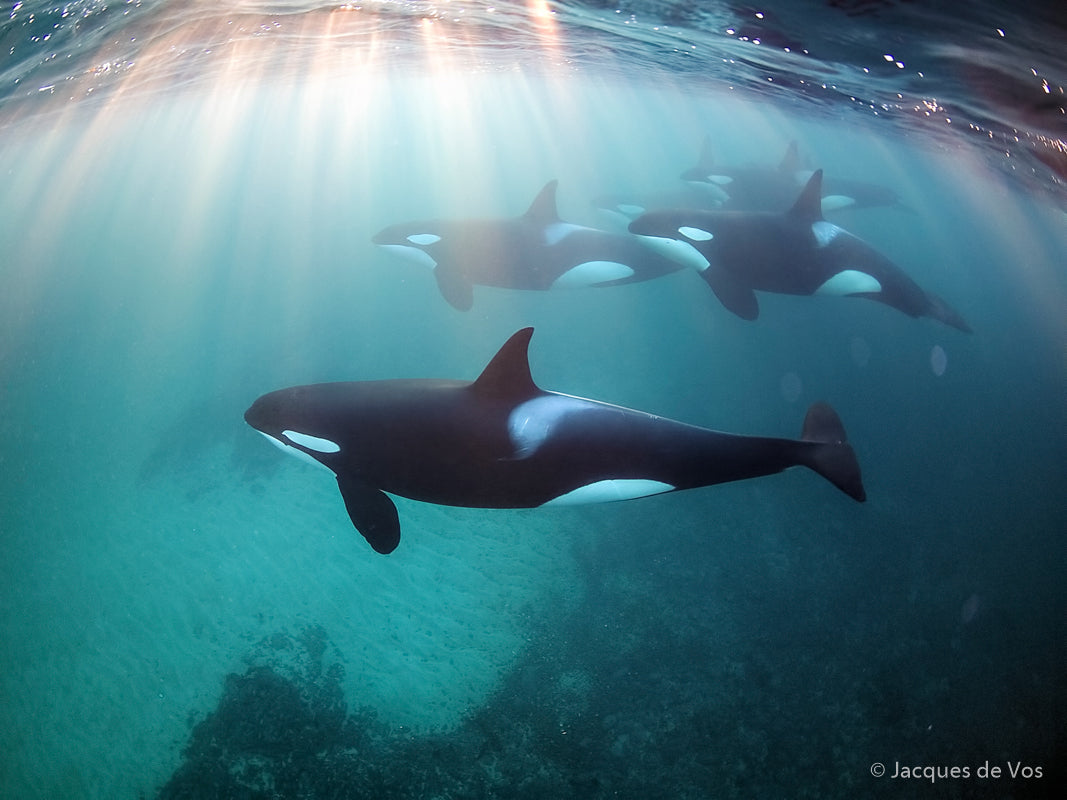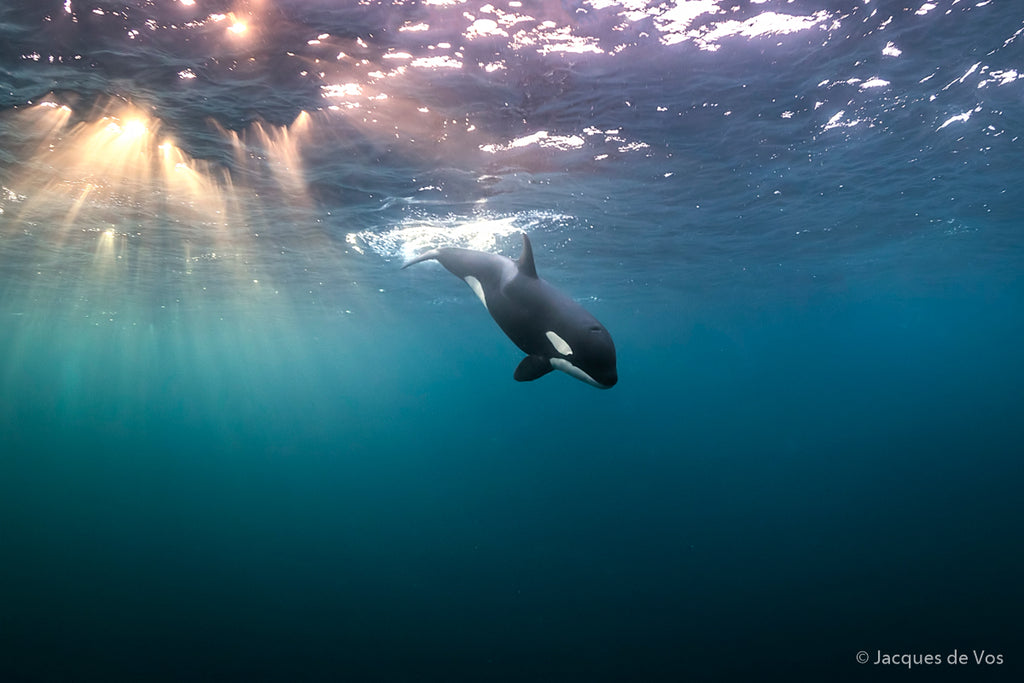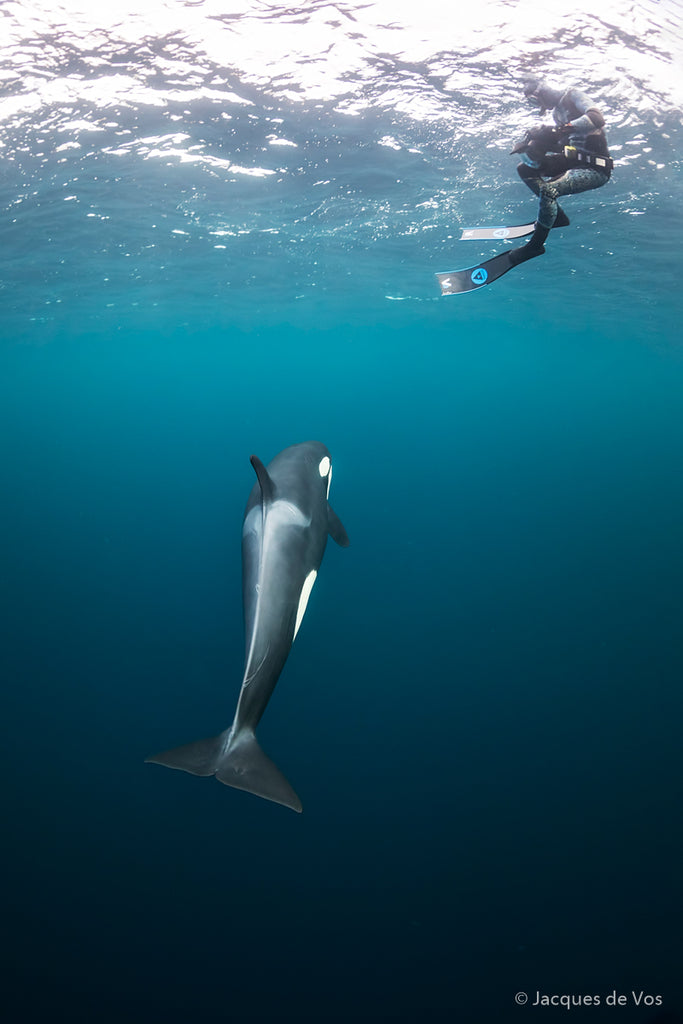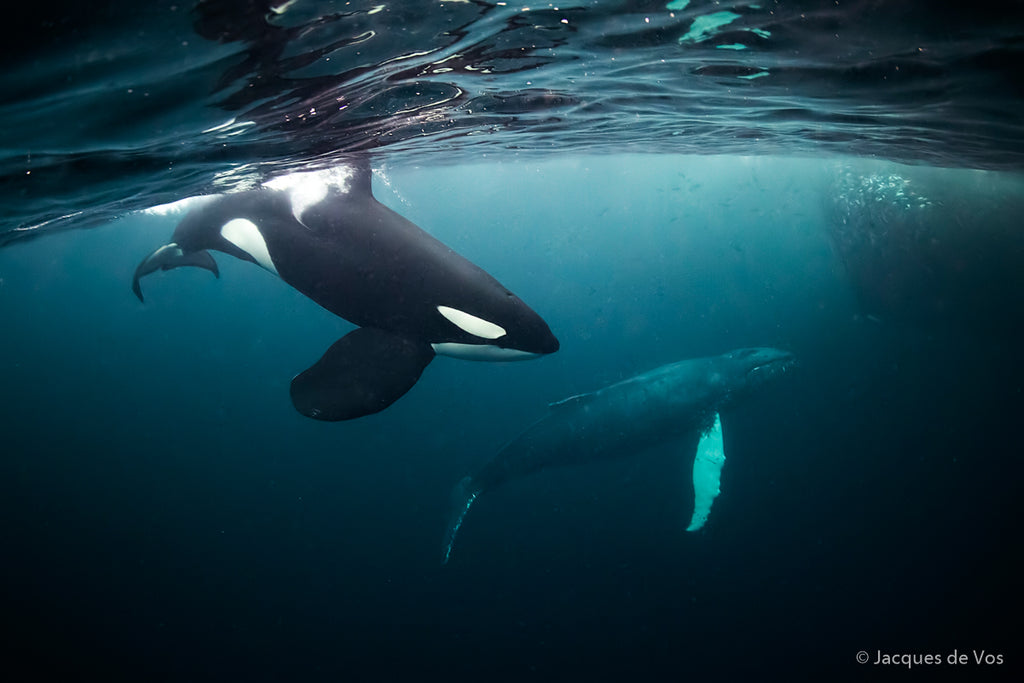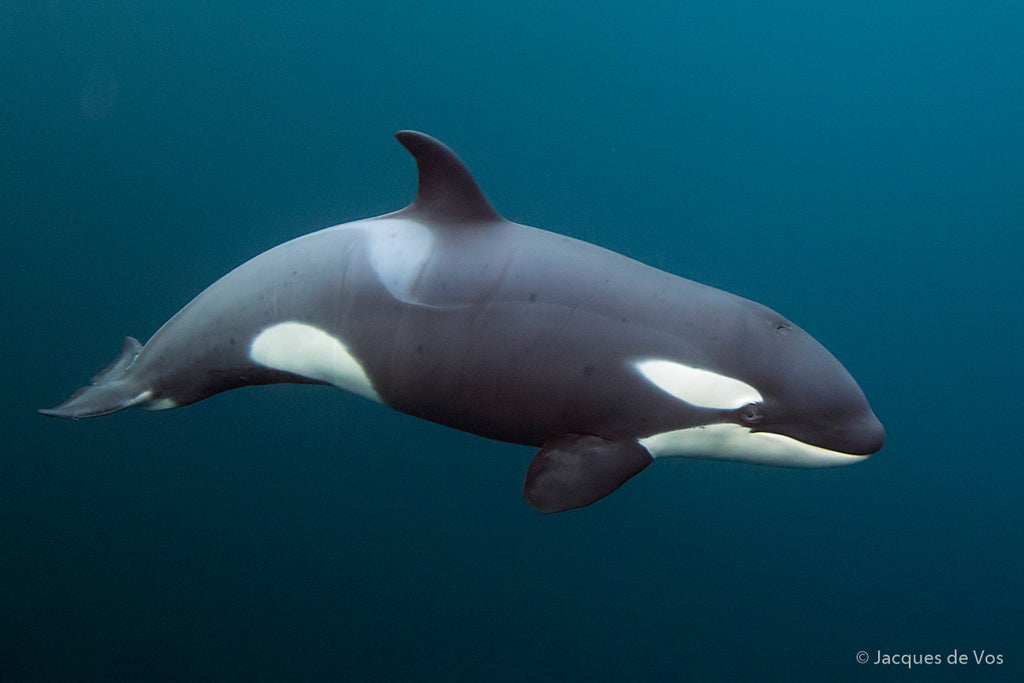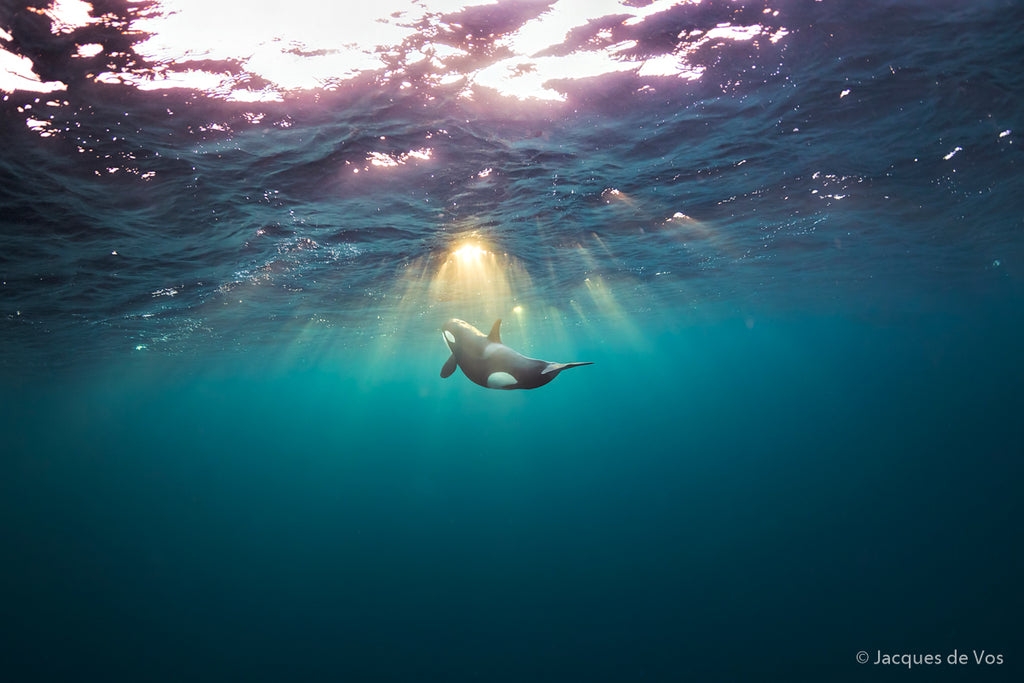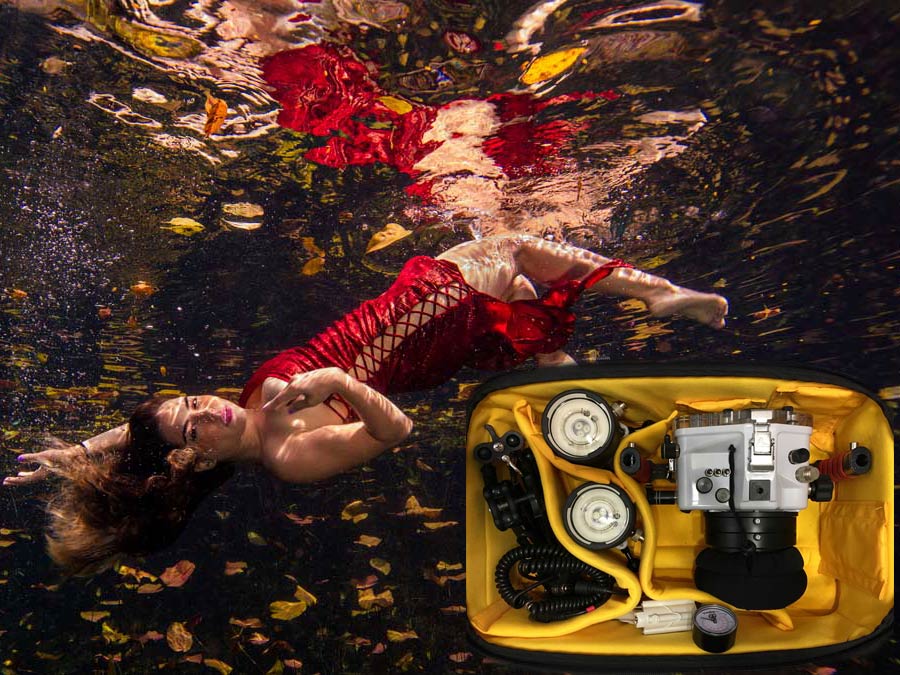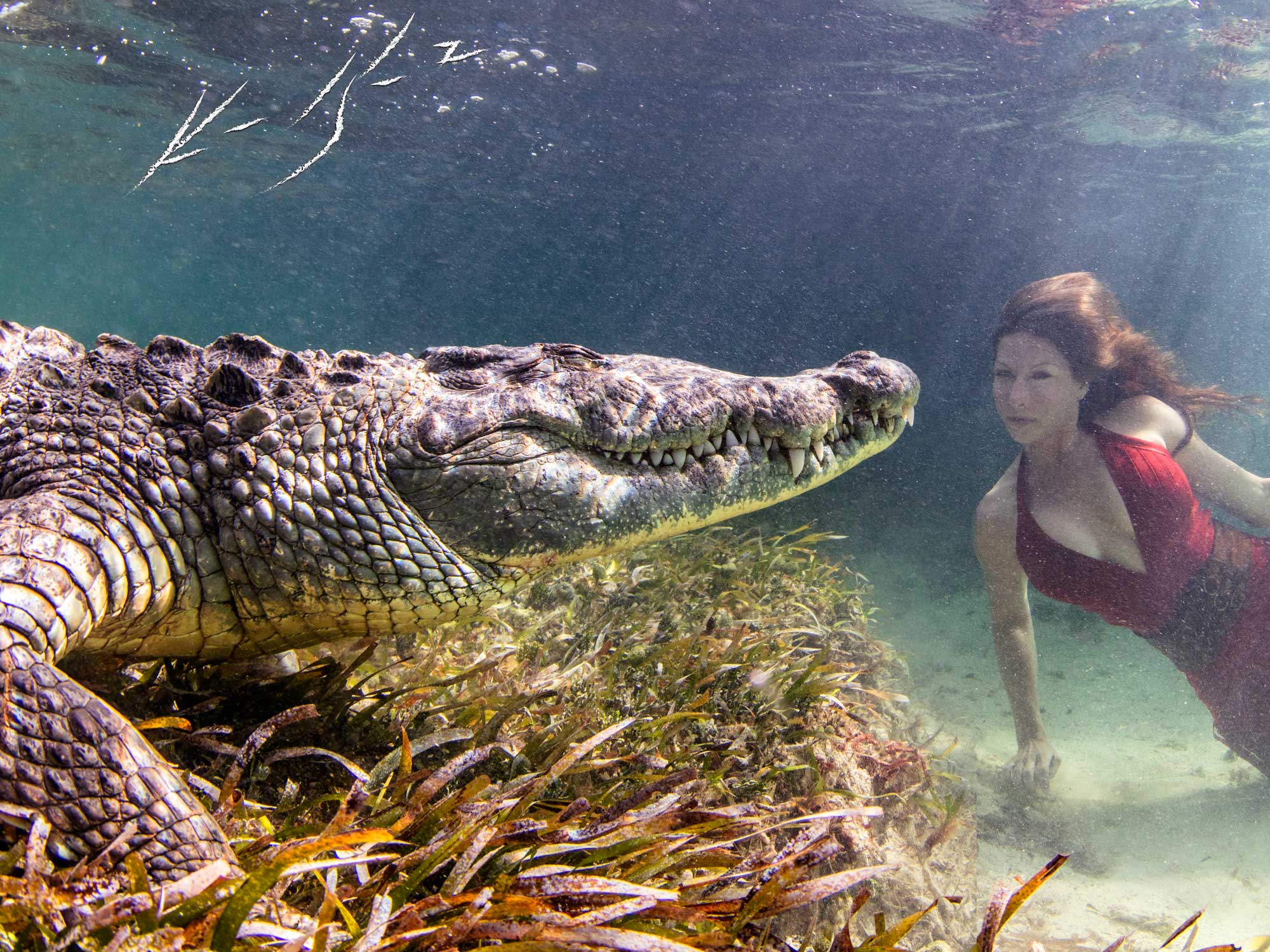Ikelite Ambassador Jacques de Vos has traveled the world freediving and shooting inspiring video and photos. Lately you can often find him in the cold waters of the Norwegian coastline looking for one of the most epic animals in the sea: the orca (or Killer Whale). We caught up with Jacques to find out more about what it's like to dive with and photograph these magnificent creatures.
What’s the best way to ensure an orca spotting?
The orcas and humpback whales in northern Norway follow the migration path of the herring spawning in Norwegian springs. So the fish essentially 'run the show'. Historically the herring enter the shallower fjords and bays along the Norwegian coast starting the end of October and tend to move out heading further south around middle or end of January.
As long as the herring come, the orcas are around pretty much every single day. Then it only comes down to joining an experienced (and ethical) operator to have the best odds of finding them. Due to the unpredictable 'landing' spots of the the herring at the start of recent seasons, its best to join an operator who is willing to follow the activity wherever it might be (like Arctic Freediving) and who is not bound to a single port or location.
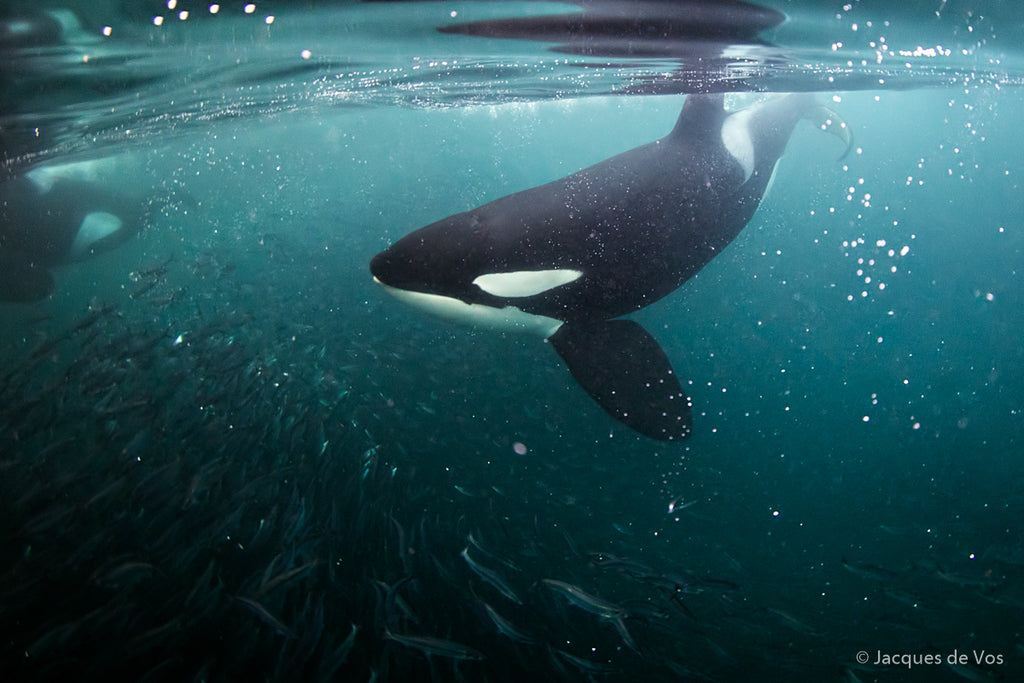
Do the orcas approach you or notice you?
It depends very much on the situation and what they are busy with... I would say 85% (rough estimate) of interactions are quick 'looks' where an orca will pass close enough to have a look at us before moving on. As they are there with the primary purpose of finding and feeding on herring, we are not always interesting enough to keep them preoccupied.
If you are fortunate you might encounter orcas feeding, exhibiting social behavior, or even better - with curious calves. In these instances they will circle you within arms reach and check you out. They might do several playful passed before moving on. This is always a very special moment for anyone in the water as having an orca actually stop and check you out is a very humbling experience!
What steps do you take to ensure the safety of the orcas and the safety of the people in the water?
As an operator we have strict in-water standards we follow to ensure the safety and well being of both the animals and our clients / crew. This starts even before an expedition kicks off as we require guests to be currently certified as freedivers, or alternatively to have suitable experience as snorkelers or scuba diver for these conditions (being able to operate in-water without direct assistance). Another important facet to our expeditions is the smaller sizes of the groups and we limit in-water numbers to a maximum 5 guests, making supervision and control as efficient as possible.
Once guests arrive they all participate in an orientation day at a guesthouse in one of the fjords. We conduct full briefings on the animals they will encounter and the safety standards we and the clients are required to follow. We then take everyone into the water (from shore) to check their proficiency and give them time to acclimatize to the water and test their gear before heading out to sea.
All our crew and guides are trained and experienced in their roles. Once we observe a suitable pod to join in the water, we are constantly following a safety and ethics system to observe changes in behavior, adhere to the standards, and always ensure every person in the water can be picked up quickly if needed (using Rigid Inflatable Boats which are always keeping an eye out).
What are your favorite lenses to use for video and/or photo of the orcas?
I seem to keep coming back to my Canon 8-15mm Fisheye as it gives me the most flexibility and also gives great, sharp images when the light allows for it. I'm still searching for the 'perfect' lens and hope to find something similar with a wide aperture soon...
Are you keeping a separate camera and lens for above water photography?
Yes I do. At the moment I have two Canon EOS 5D Mark IV's and I keep one 'dry' and ready with a longer lenses (70-200mm f/2.8) for boat based and ID shots. I also keep an assortment of lenses next to it to change out quickly if necessary.
In what ways do you adapt your shooting style to the orcas?
As the interactions can be very brief or quite intense (carousel feeding sessions!), you have less time to play around with manual settings, or simply can not get too occupied with the menu screen on the back of the camera. In these cases I tend to use shutter speed priority a lot more and also allow the camera to set ISO if the light conditions allow for it.
What about the cold water- do you have to do anything different with your equipment?
With regards to setup, not at all and my Ikelite gear I treat it as I would for any other location as it always delivers without fail. The one thing which is slightly different in the cold is that batteries deplete a bit quicker, so its important to always start the day with freshly charged batteries and to have some backups ready if needed.
What’s you’re favorite part of the experience?
Every single time I get to see an orca underwater!
How many times have you asked yourself “What am I doing?” before jumping in the water?
This has only happened twice - the very first time I jumped in the water with orcas as part of a research project and then with very carefully worked out and coordinated night related dives for research. The orcas are truly a different animal at night and not always as lethargic and slow moving as shown in the recent short film I made.
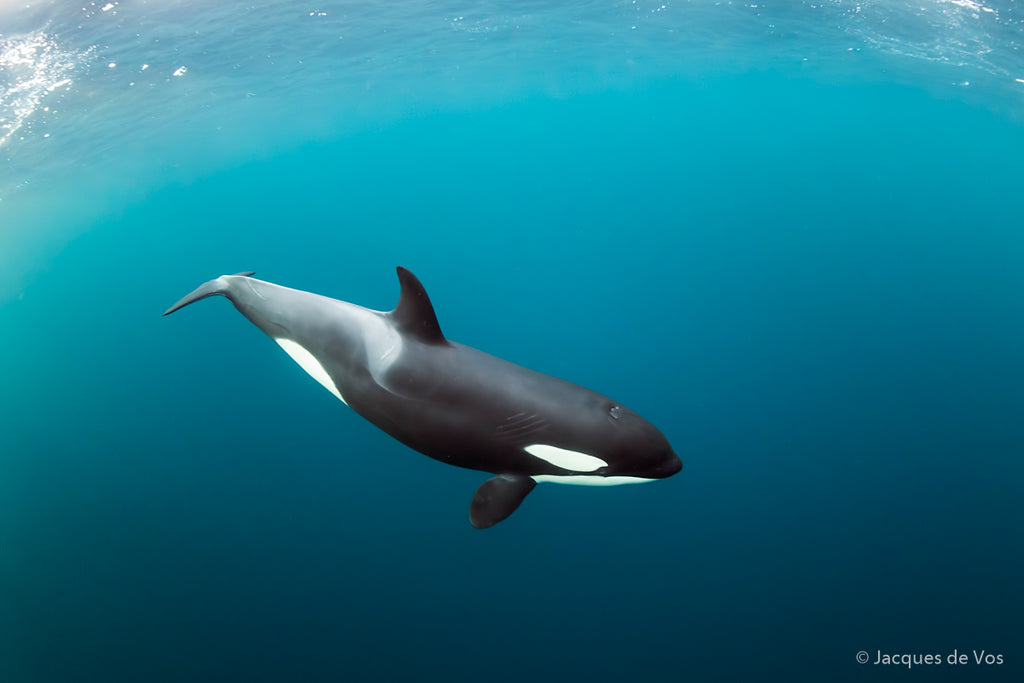
Additional Reading
Jacques de Vos Ambassador Profile











